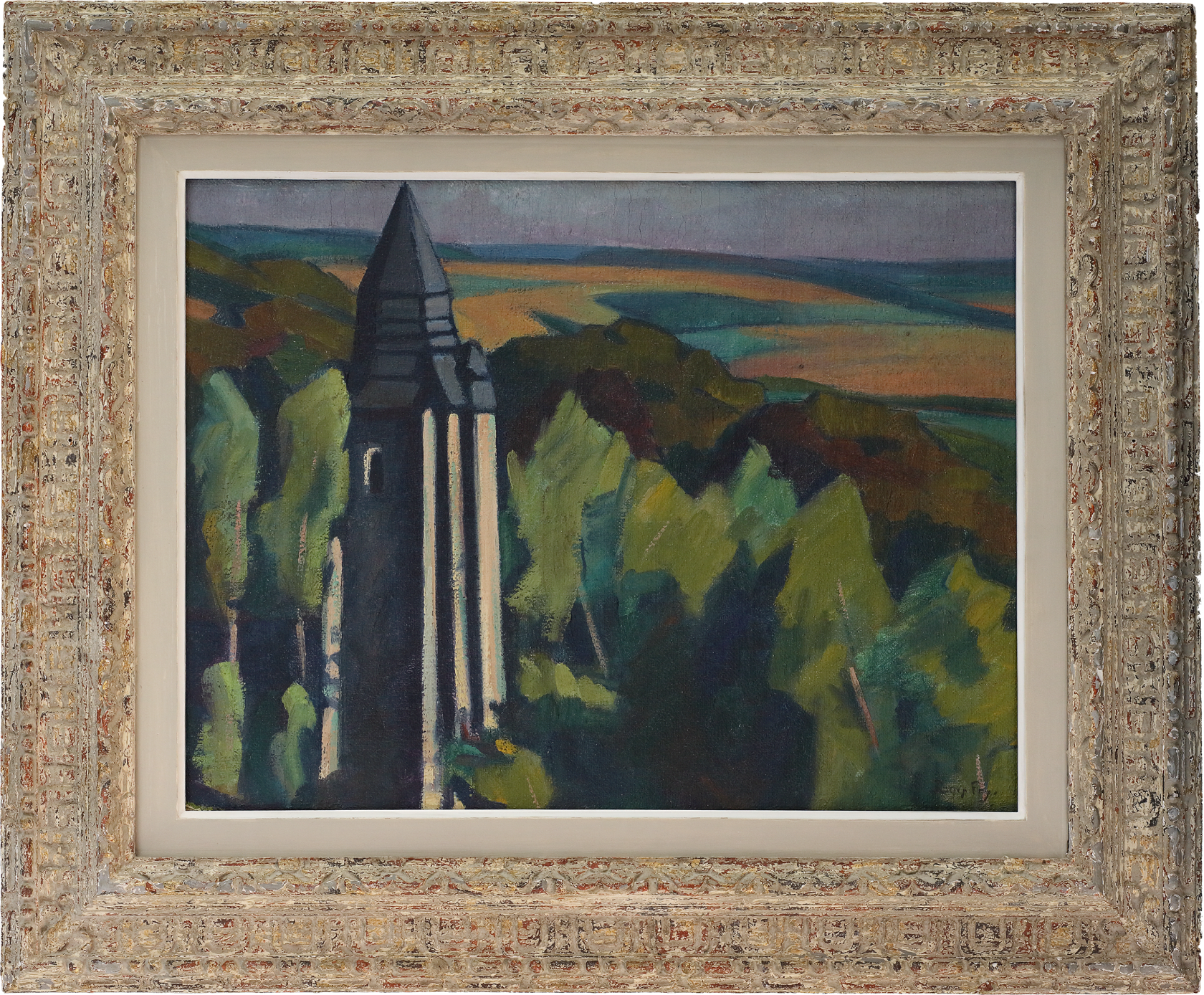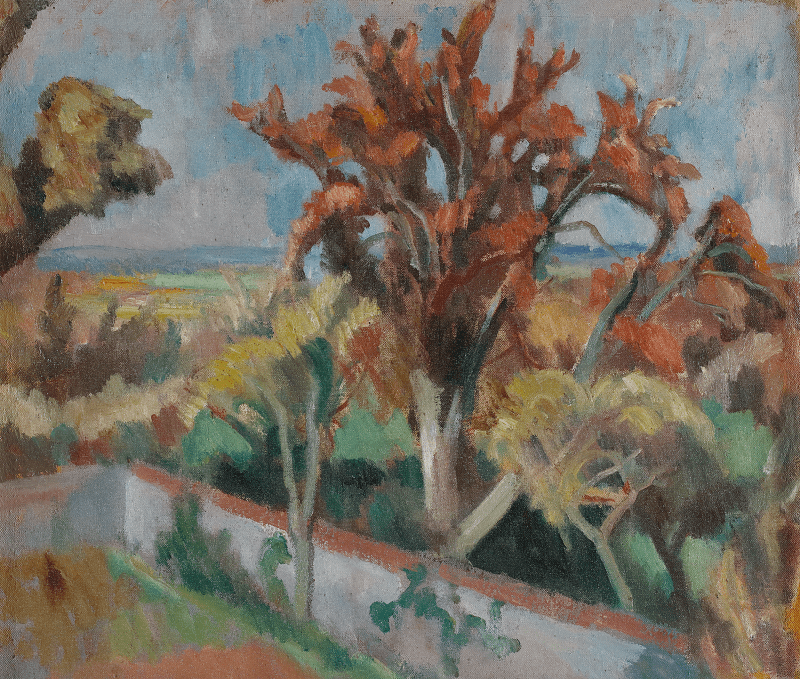We would like to thank Fiona McKenzie Johnston, author of the forthcoming publication Roger Fry: Bloomsbury and the Invention of Modern Art, for her assistance with cataloguing this painting.
Roger Fry’s paintings from this period are best understood within the context of his appreciation for European modernist painters. Carefully considered and executed, they are a commitment onto canvas of ideas which Fry formed over many decades of studying and writing about great painters of the past.
By the time the present work was painted, Fry’s deep admiration of Paul Cézanne was widely known. His work featured prominently in Fry’s Manet and the Post-Impressionists exhibition in 1910, and in the catalogue, he articulated how Cézanne ‘showed how it was possible to pass from the complexity of the appearance of things to the geometrical simplicity which design demands’. He saw the French painter’s work as pivotal to the development of modern art, and responded in particular to Cézanne’s spatial structures,...
We would like to thank Fiona McKenzie Johnston, author of the forthcoming publication Roger Fry: Bloomsbury and the Invention of Modern Art, for her assistance with cataloguing this painting.
Roger Fry’s paintings from this period are best understood within the context of his appreciation for European modernist painters. Carefully considered and executed, they are a commitment onto canvas of ideas which Fry formed over many decades of studying and writing about great painters of the past.
By the time the present work was painted, Fry’s deep admiration of Paul Cézanne was widely known. His work featured prominently in Fry’s Manet and the Post-Impressionists exhibition in 1910, and in the catalogue, he articulated how Cézanne ‘showed how it was possible to pass from the complexity of the appearance of things to the geometrical simplicity which design demands’. He saw the French painter’s work as pivotal to the development of modern art, and responded in particular to Cézanne’s spatial structures, tonal harmonies, and treatment of mass. The present work reflects this engagement. Fry stylises the overall scene, using broad panes of colour and contrasting tonal blocks to structure the composition. There is a distinct foreground, middle ground and background. The central bell tower, with its pointed roof and vertical emphasis, serves as a strong visual anchor. Behind it, a band of autumnal colours sweep across the middle-distance. The horizon, which stretches out in long horizontal bands of muted ochre and blue, lends a dramatic sense of scale and atmosphere. Though grounded in observation, the painting departs from naturalistic detail, and its emphasis lies in structure, balance, and mood, rather than topographical accuracy.
Fry is known to have painted some landscapes directly from nature, but others were developed later in the studio from memory. In 1919, he travelled widely in the south of France, visiting places such as Les Baux, Aramon, and Cagnes-sur-Mer. However, his landscapes from these trips are sometimes more interpretive than documentary, and shaped in recollection, possibly in a bid to distil the visual experience into essential shapes and colour blocks, rather than representative illustrations.
Fry approached painting with a strong sense of inquiry. On canvas, he explored the same theories he addressed in his essays, particularly questions of form, unity, and the expressive potential of painting. In this way, his paintings can be seen as parallel to his writing, providing a visual means of exploring ideas. While recognisably figurative, this composition leans toward abstraction, offering a concentrated visual essay in which memory, theory, and artistic instinct coalesce.











